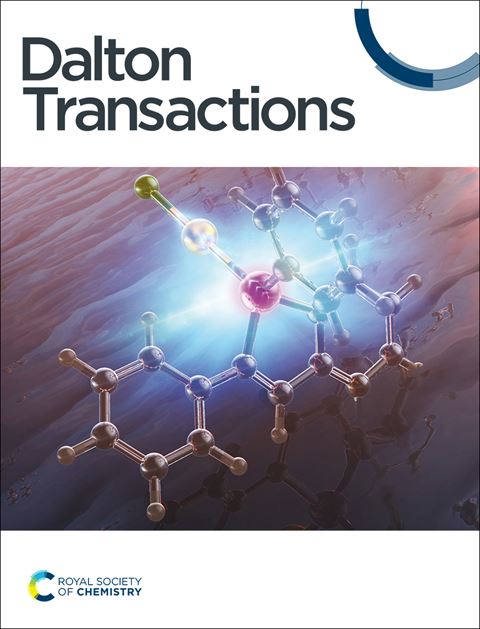Gold bis(dithiolene) radical turning metallic under pressure: fusing pyrazine and dithiine rings on a dithiolene ligand†
IF 3.5
3区 化学
Q2 CHEMISTRY, INORGANIC & NUCLEAR
引用次数: 0
Abstract
Conducting molecular materials built on dithiolene complexes −as mixed-valence salts or single component materials− are most often based of planar structures which efficiently stack on top of each other. We report here an original dithiolene ligand, namely [1,4]dithiino[2,3-b]pyrazine-2,3-bis(thiolate) (hereafter noted as pzdtdt) which associates an electron-withdrawing pyrazine ring and a folded (by 40-50°) dithiine ring. While such strong distortions from planarity has hindered up to now the isolation of highly conducting materials from such dithiine-containing dithiolene complexes, we show here that the radical gold complex [Au(pzdtdt)2]•, obtained by electrocrystallization from the 1e− oxidation of [Ph4P][Au(pzdtdt)2], organizes in the solid-state into regular, non-dimerized chains, with a semi-conducting behavior at ambient pressure, turning metallic upon application of pressures above 4 GPa. The electronic structure of [Au(pzdtdt)2]• is discussed in terms of electron localization effects, through spin-polarized band-structure calculations.求助全文
约1分钟内获得全文
求助全文
来源期刊

Dalton Transactions
化学-无机化学与核化学
CiteScore
6.60
自引率
7.50%
发文量
1832
审稿时长
1.5 months
期刊介绍:
Dalton Transactions is a journal for all areas of inorganic chemistry, which encompasses the organometallic, bioinorganic and materials chemistry of the elements, with applications including synthesis, catalysis, energy conversion/storage, electrical devices and medicine. Dalton Transactions welcomes high-quality, original submissions in all of these areas and more, where the advancement of knowledge in inorganic chemistry is significant.
 求助内容:
求助内容: 应助结果提醒方式:
应助结果提醒方式:


